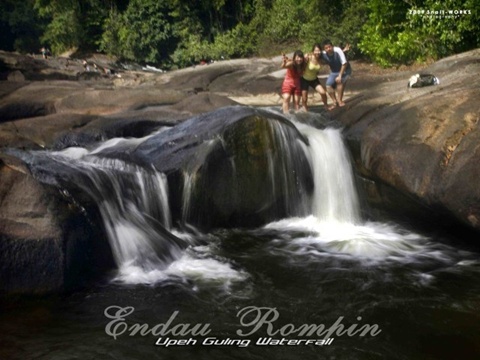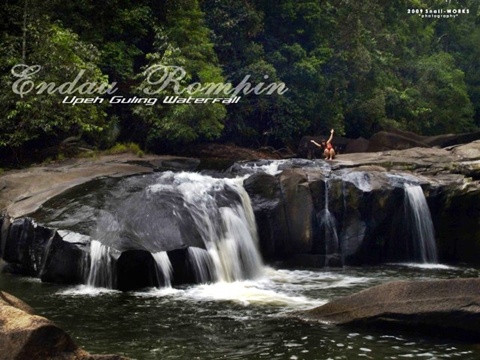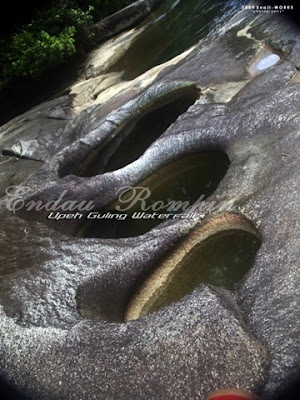Travel Tour to Belize - British Honduras
Tourism culture and History tour
Belize travel overview Belize , (
British Honduras ),, bathed by the Caribbean Sea, is closer to its neighboring islands to the elevating of the rest of Central America volatility. In this tiny country, speaking English, Creole and inherently free with a history of coups, has a calm and relaxed.
Traveling in
Belize can be difficult with only three paved roads, the prices are high

and hotels and short distance between them. But while in
Belize can only be one brand of beer, these difficulties with some of the most exceptional sites for scuba diving, Mayan ruins overlooking the jungle and out of hotels for the adventurous ecotourism more sedentary.
best time travel to Belize The
travel to Belize best time of year to visit the country cover from November to May, the dry season, but these months are also more conducive to winter sports, with higher prices and full hotels. It is cheaper to travel in summer (July-November), but we must bear in mind that this is also the season of hurricanes.
belize vacations The major national holidays are dictated by the Roman Catholic calendar, but other events include Baron Bliss Day (March 9), in honor of a noble British philanthropist who fell in love with
Belize and his death bequeathed his fortune to the people. The
Belize National Day (September 10) commemorates the battle of St. George Cay; festivities stretch until Independence Day (September 21). Other important dates are the Columbus Day (October 12) and the Garifuna Settlement Day (November 19), which recounts the arrival from Honduras in 1823, the Garinagus (black Caribs) on board canoes carved trunks. The ideal place to attend this event is the tiny town of Dangriga
Belize Attraction Belize City The former capital of
Belize can be considered the only relatively large population of the country. Tropical storms that often ravaged the city in the nineteenth and early twentieth century still appeared occasionally, damaging their ramshackle homes of wood, but also clearing the open sewer that crosses the entire city. When there is no storm,
Belize City is known for its bustle, heat and humidity. Few come here to holiday or visit their points of interest, but as the nerve center of trade and transport in the country, travelers are likely to be spending some time on it.
Belize City can be quite dangerous, especially at night.

Haulover Creek, a tributary of the
Belize River, divides the commercial center of the northern suburbs. South of Bridge Swing Bridge are various areas of interest, such as Battlefield Park, always bustling with vendors, swindlers and idlers, the Cathedral of St. John (1847), the oldest Anglican church in Central America and important, and the Bliss Institute, the cultural heart of the city. North of the bridge is the Paslow Building, a wooden building that houses the central post office. To the south are located the Image Factory Art Foundation, with exhibitions of artists from
Belize, and before reaching the tip of the peninsula, the
Belize Audubon Society, a good source of information on national parks and nature reserves of the country.
North Front Street on the north shore of Haulover Creek, is stocked for accommodations. Luxury hotels at the end of the peninsula on the north coast. Albert Street, Regent, King and Orange are the main shopping
Cays 290 km long, the reef of
Belize to be the longest in the Western Hemisphere. To the west are numerous cays reveling in warm waters up to 5 m deep. The two are the most visited Caye Caulker and Ambergris Cay. The first is considered the island ideal for travelers in economy class, while the latter has a higher grade of hotel complexes.
The Cay Caulker (800 inhab.), 33 km north of
Belize City, up to 7 km in length and only 600 m at its widest point. In fact, Caulker was split into two islands, north of the

population, after Hurricane Hattie in 1961. Mangroves cover much of the coast, shaded by coconut palms. The reef is just a short boat ride from the eastern shore and is ideal spot for diving, scuba diving and fishing. The visibility of the water can reach 60 m depth, being able to perceive the presence of corals and tropical fish. It is inadvisable to swim from the beach to the reef due to the danger of the propellers of ships.
The Ambergris Cay (2,000 inhab.), 58 km north of
Belize City is the largest in the country with its 40 km long and its northern end with slash Mexico. As in Caulker, the atmosphere is relaxed, despite the emerging blocks of apartments and other tourist buildings. The reef is located 1 km east of San Pedro, the largest population in the key. Can be made many excursions to places suitable for snorkeling and diving practice, and to turn to other keys in the region, as the Blue Hole, the Half Moon Cay and the Turneffe Islands, the only three coral atolls in the western hemisphere.
Lamanai These Mayan ruins, only partially excavated and restored, are located in its own archaeological reserve near the settlement of Indian Church. Its 60 major structures include a building height of 34 m from the end of the pre-period, a small temple and a ball. Lamanai (submerged crocodile) was already populated in 1500 BC and became an important ceremonial center with its huge temples long before most Mayan sites.

Aboriginal people lived in their Lamanai until the arrival of the Spaniards, nearby, the ruins of two churches that testify Indian still in Maya to be evangelized. The 90 minutes journey by boat up the river from New River in Orange Walk to Lamanai is an adventure in itself. The boat passes through the Mennonite community of Shipyard and provides the opportunity to see many birds and crocodiles.
Xunantunich Xunantunich (girl rock) is the pride of archaeological
Belize. Built on top of a flattened hill, near the
Belize River and the Guatemalan border, Xunantunich controlled the road along the river that originates in the hinterland to the Caribbean coast. The population flourished as a ceremonial and, apparently, was abandoned after an earthquake that struck around the year 900 AD Much of the ruins have not been

restored, although its tallest building, the impressive castle stands with its 40 m high above the jungle.
Placencia Perched at the southern end of a long narrow sandy peninsula in Southern
Belize, this quiet beach town justifies each of the jolts and bumps that are felt to run through the tracks of land that are directed to Placencia. The whole business was done by sea, so the main street of the population is only a narrow paved path that does not reach the meter in width. The main attraction of this site focuses on its beaches and water sports, but also offers the option to go fishing, watch birds and manatees, camping on remote cays and take trips to different rivers that run into the jungle or the Reserve Natural Cockscomb Basin, home to jaguars, pumas, ocelots, margays, agouti, anteaters, armadillos, boa constrictor and numerous bird species.
Mountain Pine Ridge Forest Reserve
This forest reserve of 800 km ², anchored in the West virtually virgin terrain, with numerous waterfalls and orchids, parrots, toucans and other exotic species of flora and fauna. In the wet season, the tiresome routes through the forest are insurmountable, but it is this inaccessibility that makes the area remains unexplored, is an ideal location for exploring on foot, horseback or canoe. These tours include the Rain Forest Medicine Trail, a walking trail through the jungle on medicinal herbs;

Chechem Ha, a Mayan cave full of newly discovered objects and ceremonial pottery; Caracol, a large Mayan city without restoring immersed in the jungle , Thousand Foot (Hidden Valley) Falls, a waterfall 300 m silver is precipitated into a misty valley, and Barton Creek Cave, a cave Maya increasingly popular, but less visited than Chechem Ha, with skulls and bones and fragments of ceramics.
Sanctuary in Bermudian Landing community Mandrel
Sanctuary in Bermudian Landing community Mandrel The black howler monkey is found only in
Belize, and this is the ideal location to discover one. The villagers of Bermudian Landing have established a reserve in the jungle close to their population (about 30 miles west of
Belize City), with a visitor information center, where exhibitions of this endangered species and two hundred species of animals and birds that inhabit the reserve
Belize activities The keys and the

reef of
Belize offers all possibilities for swimming, diving, snorkeling, sailing, windsurfing and fishing. It is also possible to canoe down the rivers Macal, Mopan and
Belize, around San Ignacio and caves along the river Chiquibul. The best routes for hiking are in the Forest Reserve Mountain Pine Ridge Reserve and the Cockscomb Basin Natural. Birdwatchers can go to rivers, swamps and lagoons of Crooked Tree Nature Reserve, halfway between
Belize City and Orange Walk, where flocks of migratory birds arrive between November and May
History Of Belize Maya and Carib Indians were the first inhabitants of
Belize, a territory that was part of the Mayan empire which stretched through Guatemala, southern Mexico

and parts of Honduras and El Salvador. The classical period of greatest splendor of that civilization began toward the second century AD, reached its splendor between the ages VI and VIII and began its decline in the fourteenth century. When the Spanish arrived in the sixteenth century, many cities were deserted.
Colonizers
Belize only appreciated its timber, for the manufacture of dyes. While the country depended on the Spanish governor of Yucatan, it lacked an effective government. This vacuum government with the security provided by the reef that protects its shores attracted English and Scottish pirates during the seventeenth century. When piracy began its decline, many saqueaderos were introduced in the timber trade.
Belize was a British tradition and sympathy and when British forces expelled in 1798 for the Spanish Navy's Cay St. Georges. In 1862, while United States was immersed in civil war and unable to comply with its Monroe Doctrine, United Kingdom colonized
Belize, which should be known as British Honduras.
After World War II, its economy is weakened, leading to an agitation for independence. Formed political parties and democratic institutions, and in 1964 the nation gained independence. The government decided to build a new capital at Belmopan in 1970, the former capital,
Belize City, had been razed after Hurricane Hattie in 1961. Guatemala, which claimed the territory, threatened to declare war in 1972, 1975 and 1977, but British troops are facing in the country to secure a diplomatic solution. Independence was achieved in September 1981 when he became British Honduras
Belize, a member of the Commonwealth. During the volatile 1980s,
Belize remained stable and pro-United States, thanks to the entry of substantial U.S. aid. In 1991, the new Guatemalan government recognized the country's territorial integrity. The British garrison was withdrawn in 1994, at present,
Belize has a regular army of only a few hundred soldiers.

Since the fall of General Noriega in Panama,
Belize has become an important port of call for the United States for cocaine from South America. There is also widespread cultivation and smuggling of marijuana.
Belizeans take 20 years fighting for the reinstatement of the indigenous culture. Many
Belizeans had to leave the country to make a fortune and send money to support his family.
Prime Minister Said Musa, in power since 1998, has overseen the transformation of the economy of
Belize. The services sector especially tourism, now prevalent in places where before prevailing farming, logging and fishing.
Belize is hispanizando through its approach to other countries in Central America. Is exposed to the fury of hurricanes in late summer, as Keith and tested hurricane Iris in 2000 and 2001, respectively
The Maya built impressive temples, following the movement of celestial bodies. Although technically it is a culture of the Stone Age, also developed sophisticated mathematical and astronomical calendars in addition to measure time. The Spaniards built churches stone sober but modern architecture is based on the British Caribbean.
The official language of
Belize is English, but the Creoles (the largest ethnic group) speak it with their own dialect. Spanish is the language most used in the North and some towns in the West. Also, minorities who are in Maya, Chinese, German Mennonite, Lebanese, Arabic, Hindi and Garifuna (the language of the Garinagu Stann Creek District).
The majority of the population professes Catholicism, and the British influence has made a considerable and varied Protestant congregation, including German and Swiss Mennonite. Mayan practice of Catholicism is marked by a fusion of shamanism, animism and Christian rituals.
Belize has never developed a true national cuisine. Its cuisine is inspired by the British, American, Mexican and Caribbean. Its basic ingredients are rice and beans, often eaten with chicken, pork, beef, fish or vegetables, coconut milk and bananas fried dishes to add a truly tropical taste. The recipes include traditional exotic meat armadillo, venison and fried paca, a rodent similar to a brown guinea pig
Belize map 

























































